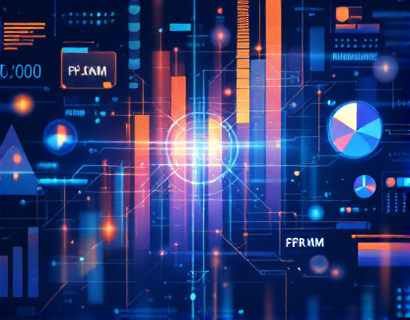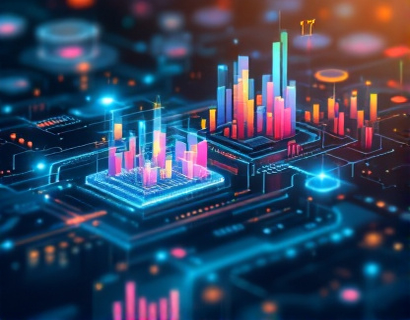Crypto and AI: Catalysts for Next-Gen Digital Engagement in the Ucosystem
The integration of blockchain technology and artificial intelligence (AI) is ushering in a new era of digital engagement, fundamentally transforming the tech ecosystem. This synergy is not just about combining two advanced technologies but about creating a powerful framework that enhances user experiences, drives growth, and opens up unprecedented opportunities for tech enthusiasts and early adopters. This article delves into the intricate relationship between crypto and AI, exploring how their convergence is reshaping interactions and unlocking new potentials in the digital world.
The tech ecosystem is rapidly evolving, with digital engagement becoming a critical factor for success. Traditional methods of engagement are being replaced by more sophisticated and personalized approaches, driven by the capabilities of AI and the security and transparency offered by blockchain. The fusion of these technologies is creating a more seamless, secure, and interactive digital environment, where users can enjoy enhanced experiences and businesses can achieve greater efficiency and innovation.
Enhancing User Experiences with AI and Blockchain
AI's ability to analyze vast amounts of data and derive actionable insights is complemented by blockchain's inherent security and decentralization. Together, they can create highly personalized and secure user experiences. For instance, AI algorithms can process user data to offer tailored content, recommendations, and services, while blockchain ensures that this data is securely stored and managed, giving users control over their personal information.
Personalization is a key aspect of modern digital engagement. AI-driven systems can analyze user behavior, preferences, and interactions to deliver customized experiences. This level of personalization not only improves user satisfaction but also increases engagement and loyalty. Blockchain adds a layer of trust and transparency, ensuring that user data is handled ethically and securely. Users can verify how their data is used and have more control over their digital footprint, fostering a deeper connection with the services they interact with.
Driving Growth through Decentralized Applications
Decentralized applications (dApps) are a prime example of how AI and blockchain can drive growth in the tech ecosystem. dApps leverage blockchain's decentralized nature to create applications that are more resilient, transparent, and user-controlled. AI enhances these applications by providing intelligent functionalities, such as predictive analytics, natural language processing, and automated decision-making.
In the financial sector, for example, AI-powered dApps can offer smart contract solutions for secure and automated transactions, while blockchain ensures the integrity and traceability of these transactions. This combination reduces fraud, lowers transaction costs, and increases efficiency, making it an attractive option for businesses and consumers alike. The financial industry is just one of many sectors benefiting from this synergy, with potential applications in healthcare, supply chain management, and more.
Security and Trust in the Digital Age
Security and trust are paramount in the digital age, and the combination of AI and blockchain addresses these concerns effectively. AI can detect and mitigate security threats in real-time, analyzing patterns and anomalies to prevent breaches and fraud. Blockchain's immutable ledger provides a tamper-proof record of transactions and interactions, ensuring that data remains intact and verifiable.
For businesses, this means a significant reduction in security risks and compliance costs. For users, it translates to a higher level of trust in digital platforms and services. The transparency provided by blockchain, combined with AI's advanced security measures, creates an environment where users feel safe to engage and transact online. This trust is crucial for the widespread adoption of digital technologies and the growth of the tech ecosystem.
Innovative Business Models and Economic Incentives
The integration of AI and blockchain is also revolutionizing business models and creating new economic incentives. Tokenization, a process enabled by blockchain, allows for the creation of digital tokens that represent assets, services, or utility within a network. AI can optimize these tokenized systems, ensuring efficient allocation and utilization of resources.
For instance, in the creative industry, artists can tokenize their work, allowing fans to purchase unique digital pieces with inherent value and scarcity. AI can enhance this process by recommending personalized art pieces to users based on their preferences, while blockchain ensures the authenticity and ownership of the digital assets. This model not only provides new revenue streams for creators but also offers fans a more meaningful way to engage with and support their favorite artists.
In the realm of gaming, AI and blockchain are creating decentralized gaming platforms where players can earn tokens for their in-game achievements and contributions. These tokens can be used within the platform or traded on external markets, providing a direct economic incentive for user engagement. AI enhances the gaming experience by creating dynamic and adaptive game environments, ensuring that players are constantly challenged and entertained.
Enhancing Content Creation and Distribution
Content creation and distribution are also being transformed by the combination of AI and blockchain. AI-powered tools can assist creators in producing high-quality content, from generating ideas to editing and optimizing videos and articles. These tools can analyze trends, audience preferences, and performance metrics to provide insights that help creators refine their content strategy.
Blockchain, on the other hand, ensures that content creators are fairly compensated for their work. Through smart contracts, creators can receive automatic payments whenever their content is accessed or used, eliminating the need for intermediaries and ensuring transparency. This direct connection between creators and consumers fosters a more equitable and sustainable content ecosystem.
Furthermore, blockchain-based platforms can offer decentralized content distribution networks, reducing reliance on centralized platforms and increasing the reach and visibility of content. AI can optimize the distribution process by analyzing data to determine the most effective channels and strategies for content dissemination, ensuring that creators' work reaches the widest possible audience.
Challenges and Considerations
While the potential of AI and blockchain in digital engagement is vast, there are challenges and considerations that need to be addressed. One of the primary challenges is the technical complexity involved in integrating these technologies. Developers and businesses must have a solid understanding of both AI and blockchain to leverage their full potential effectively.
Another consideration is the regulatory landscape. As these technologies evolve, regulations are still catching up, and there is a need for clear guidelines to ensure compliance and protect users. Privacy concerns also remain a significant issue, as the use of AI involves processing large amounts of personal data. Ensuring that AI systems are transparent and that user data is handled ethically is crucial for maintaining trust and compliance.
Scalability is another factor to consider. While blockchain technology offers many benefits, it can face scalability issues, particularly in terms of transaction speed and cost. Advances in blockchain technology, such as layer 2 solutions and more efficient consensus mechanisms, are addressing these challenges, but ongoing innovation is necessary to support widespread adoption.
Future Prospects and Opportunities
The future of digital engagement is bright, with AI and blockchain continuing to drive innovation and transformation. As these technologies mature, we can expect even more sophisticated and seamless integrations, leading to new forms of interaction and engagement.
One exciting area is the development of decentralized social media platforms that prioritize user privacy and data ownership. AI can enhance these platforms by providing personalized experiences and content curation, while blockchain ensures that users have control over their data and are rewarded for their engagement. This model could redefine how we interact online, moving away from the current data-driven, ad-supported paradigms.
In the enterprise sector, AI and blockchain can revolutionize internal processes and customer interactions. For example, AI-powered chatbots and virtual assistants can provide 24/7 support, while blockchain can secure and streamline supply chain operations. The combination of these technologies can lead to more efficient, transparent, and customer-centric business operations.
For tech enthusiasts and early adopters, the intersection of AI and blockchain offers a wealth of opportunities. Engaging with decentralized projects, participating in tokenized economies, and contributing to the development of new technologies can be both rewarding and profitable. The community-driven nature of these technologies fosters collaboration and innovation, creating a vibrant and dynamic ecosystem.
In conclusion, the integration of AI and blockchain is not just a technological advancement but a transformative force reshaping the digital landscape. By enhancing user experiences, driving growth, and creating new economic models, these technologies are paving the way for a more connected, secure, and engaging tech ecosystem. As we continue to explore and harness their potential, the possibilities for next-gen digital engagement are endless.










































